Even though checking baby’s temperature rectally gives you the most accurate results, baby sometimes tolerates this method poorly. Baby starts fussing, protesting or crying. A solution to this problem might be checking baby’s temperature via the forehead.
A thermometer that can check body temperature via the forehead is called a temporal artery thermometer. iProven’s DMT-316 BLU is such a thermometer. It works by sliding the device across the forehead, checking the temperature of the blood that flows through the artery in the forehead. Based on this temperature, the thermometer calculates the body temperature. The blood flowing through the temporal artery comes from the body’s core and is the most accurate representation of true body temperature.
There has been some discussion on the accuracy of forehead thermometers. Does this method compare to a rectal thermometer?
While it’s true that a forehead thermometer often deviates around 1℉ from a rectal thermometer, it doesn’t mean that a forehead thermometer can’t give you accurate and reliable results. Keep the following things in mind when you check baby’s temperature via the forehead:
-
Before checking baby’s temperature, make sure the lens of the temperature is clean. A dirty lens gives inaccurate temperatures. Exactly what you want to avoid! Clean the lens with rubbing alcohol before and after every use.
-
Always follow the thermometer as instructed in the user manual. This will give you the most accurate results. Some forehead thermometers require you to point the device at the forehead with a distance of a few inches. iProven’s DMT-316 BLU works by sweeping the device across the forehead. Like you are scanning a barcode.
- If the thermometer indicates a fever or a temperature that seems unlike or even absurd, repeat the process once or twice. This will avoid anomalies and maybe an unnecessary trip to the doctor.
The forehead thermometer is non-invasive. Unlike the rectal method, it’s not uncomfortable for baby. Having a sickly baby worries any parent. And adding to that discomfort with a rectal temperature check? The last thing you want! If baby is especially fussy or wiggly, check baby’s temperature via the forehead.
Remember to double-check if the temperature seems unlikely or inconsistent. If necessary, a rectal baby thermometer can confirm your suspicion or ease your worry.
Fever is a common sign of illness and not necessarily bad. However, contact your doctor if baby’s temperature reads 100.4℉ and is younger than 3 months old or if baby’s temperature reads 102℉ and is younger than 6 months old.


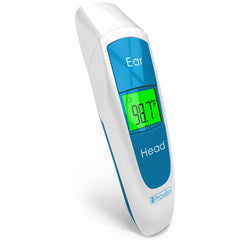
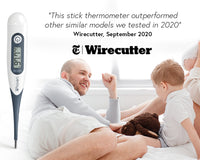
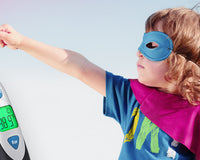

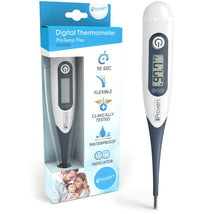
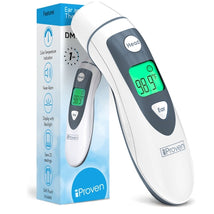

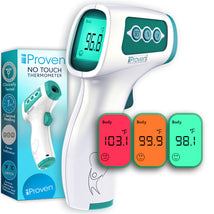
![iProven DMT-77 No-Touch Forehead Thermometer for Adults, Kids, Babies [Superior Accuracy, Upgraded Fever Alarm, Quiet Vibration Alerts] Digital Infrared Baby Thermometer with Ear Mode, Hypothermia Alarm](http://iproven.com/cdn/shop/files/AMI_DMT-77_image1_V3.3_MP_1_214x.jpg?v=1690531003)










